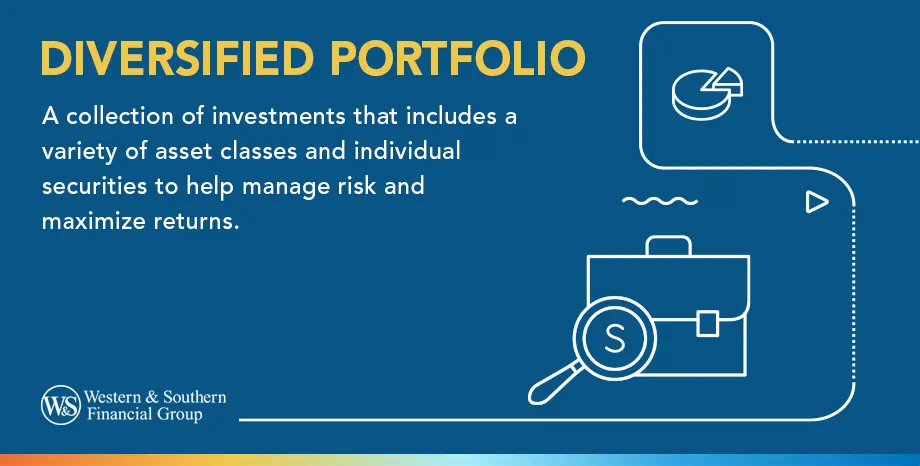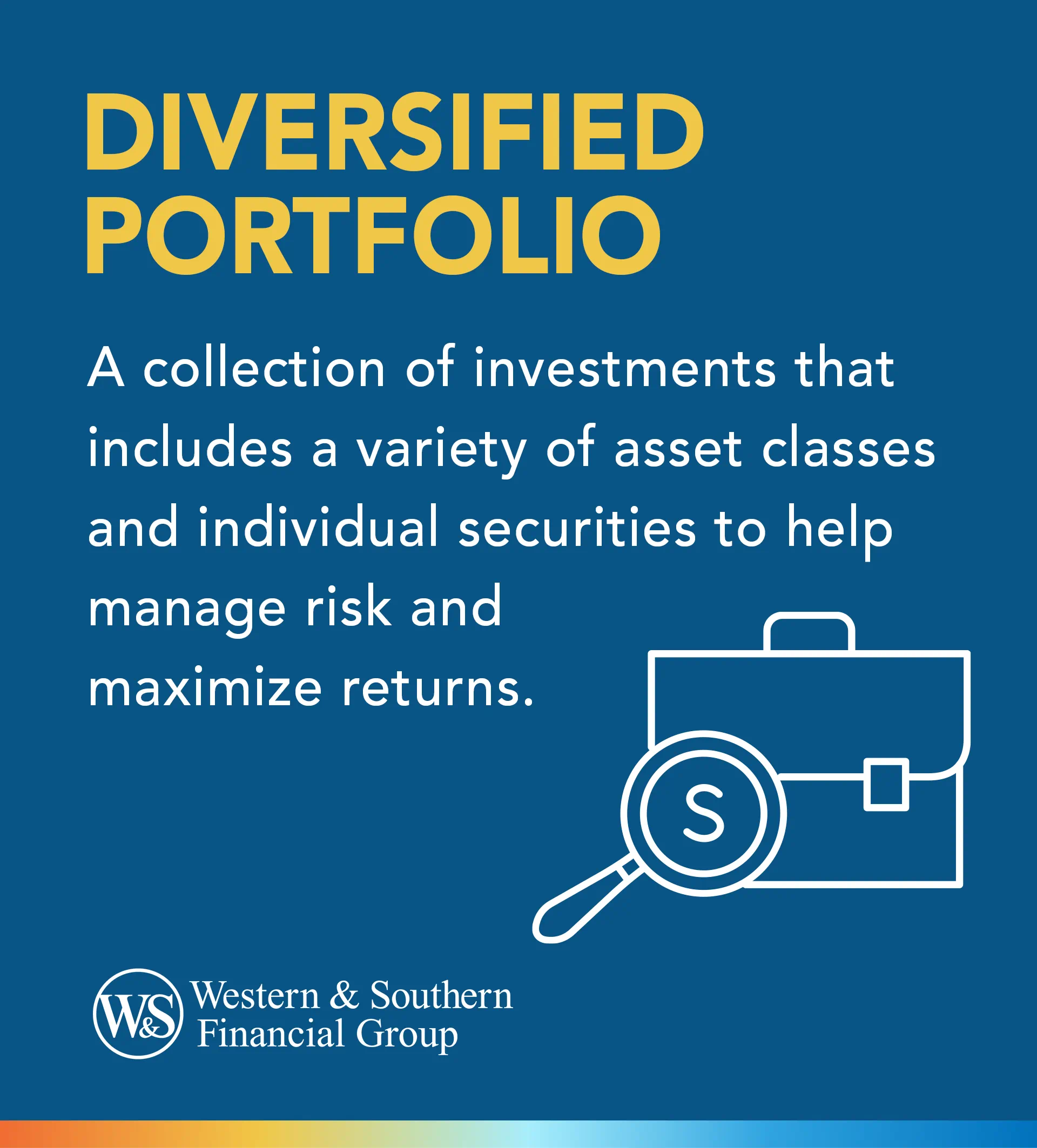

Table of Contents
Key Takeaways
- Diversification involves spreading your money across different asset classes like stocks, bonds, and alternative investments.
- There's no one-size-fits-all approach to diversification - your optimal mix depends on factors like age, risk tolerance, and portfolio size.
- Stocks offer growth potential but are more volatile, which may warrant a larger allocation when you're younger or have a bigger portfolio.
- Bonds and cash provide more stability but lower returns, so are important for managing risk, especially as you near retirement.
- Rebalancing periodically and diversifying within asset classes (e.g. types of stocks and bonds) are also important principles of diversification.
Creating a diversified portfolio generally entails putting your money into multiple types of investments, such as stocks, bonds and other kinds of assets. It may be the key to unlocking long-term investment growth — and it could also help you manage risk, as you wouldn't be putting all of your money into one place.
While there's no portfolio diversification formula that will work for everyone, certain fundamental principles could help you reach your financial goals. Learn more about how you could strategically diversify your portfolio — and manage market fluctuations.
How Does Portfolio Diversification Work?
If you put all of your eggs in one basket, what happens if the basket drops? That's really the heart of portfolio diversification — spreading your money out among a number of different asset classes to help manage risk. A diversified portfolio could contain multiple asset classes, which are groupings of similar types of investments. The largest asset classes are stocks, bonds and "cash," such as money market funds and bank certificates of deposit (CDs). There are also other types of assets, like real estate and commodities (such as gold and silver), that fall into a broad classification called "alternative investments."
So, what is the optimal proportion of each asset class? Well, that could vary depending on different factors, such as your age, risk tolerance, the size of your portfolio and any anticipated inheritance. Remember, there's no formula that works for everyone, but arming yourself with information could help you find — and keep — the right balance.
Stocks
Stocks are generally more volatile than other asset classes, but they may also provide better growth potential over the long term. Therefore, stocks could make sense as a larger part of a younger person's portfolio. Someone with a large portfolio might also consider having a higher allocation to stocks — as their ability to afford retirement or leave an inheritance might not be compromised by a dip in the stock market.
Bonds & Cash
Bonds and cash should be a larger part of portfolio for low risk. This could help satisfy your need for relative stability, as your overall diversified portfolio might not fall as much in a period of market decline. However, note that diversification neither assures a profit not guarantees against a loss in a declining market.
Asset Classes
Some other important things you could keep in mind? Consider diversifying within asset classes. Within the stock asset class, for example, this could mean having growth stocks, high-dividend-paying stocks and international stocks, among others. And within the bond asset class, you could diversify by a bond's credit quality, length to maturity and tax status — as some bonds are exempt from income tax. Diversification could also be an important consideration for those with company stock options, as investing too much in one stock could lead to an unbalanced portfolio. Periodically giving your portfolio a checkup could help you decide if you need to rebalance your assets.
Portfolio diversification could be a part of your investment strategy. So, consider speaking with a registered representative. A financial professional can conduct a financial needs analysis, which is an assessment of your current financial state, and help you develop a plan to reach your financial goals.
Building a Diversified Portfolio
Perhaps the simplest way to build a diversified portfolio is with mutual funds. Shares of mutual funds represent a piece of a large managed portfolio. Some are very broadly diversified. For example, "balanced" funds hold both stocks and bonds. Others are broadly diversified within a large category of stocks, such as blue chip stocks, or bonds, such as highly rated corporate bonds.
Other funds have very narrow investment parameters, such as a specific industry sector or geographic region. Some funds pursue an "active" strategy, which means a portfolio manager is actively purchasing and selling individual securities within the fund portfolio in search of the best opportunities. In contrast, a "passive" fund is designed to track a specific market index.
You could also consider investing in a professionally managed portfolio that has a different legal underpinning than a mutual fund or ETF. All you would have to do is decide which managed portfolio is right for you at any particular life stage. Note that past performance is no indication of future results.
The Bottom Line
An investment into any type of security comes with the possibility of loss. Market fluctuations are inevitable. An appropriately diversified portfolio (and a cool head) are your best protection. Diversifying your portfolio doesn't have to feel like a balancing act. Armed with the right information, you could be one step closer to reaching your financial goals and minimizing your investment risk for a more secure — and potentially more prosperous — tomorrow.
Diversification does not guarantee investment returns and does not eliminate the risk of loss. Diversification among investment options and asset classes may help to reduce overall volatility.















